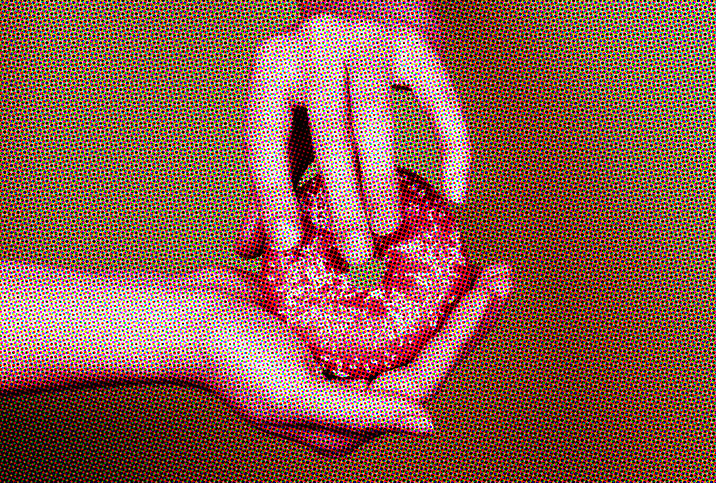What to Do If You've Been Diagnosed With Type 2 Diabetes

About 1.5 million adults are diagnosed with diabetes each year, according to the Centers for Disease Control and Prevention (CDC). Diabetes is a serious disease that needs constant monitoring and dietary and lifestyle changes, and it impacts almost every facet of daily living.
If this isn't scary enough for you, learning what to do to manage your disease can feel like you're stumbling around in a dark room in search of a light switch. Fortunately, there are many resources and tips to help you gain control.
While remission is possible, it doesn't happen without major life changes that are a lifelong commitment.
"All aspects of one's life change with a diagnosis of diabetes," said Pilar Inglesis, the communications representative for Diabetes Canada. "You can expect never-ending demands of diabetes care, such as nutrition, physical activity, monitoring blood sugar levels, scheduling and planning all aspects of your day, symptoms of low or very high blood sugar levels, and the reality of comorbidities in the future."
It's not a life sentence
About six years ago, my husband scheduled an appointment with his doctor. He was experiencing leg pain and headaches, and he felt sick all the time. We hiked frequently, and we live in deer country, so he thought he had Lyme disease. They ran tests, and a week later he got the call that forced us to alter our lifestyle. He didn't have Lyme disease—he had type 2 diabetes.
My husband asked what the treatment was, and I will never forget what his doctor said: "I ordered you some medication, test your blood sugar twice a day, and don't eat bread or potatoes." My husband hung up and just sat there. What does that even mean?
He took his medication, and his pharmacist explained how to test his blood glucose and his goal numbers. How often you test your blood sugar depends on the stage of your diabetes.
We knew we had work to do, but we had no idea where to start. Of course, we turned to the internet for help and were inundated with information. It took some time, but we learned what resources would help and what tips made the biggest impact on his glucose levels.
Choosing 'healthy' foods
"Diabetes is a 24/7 condition, and the more one is educated, especially when first diagnosed, the better they will do lifelong," said Steve Edelman, M.D., Taking Control of Your Diabetes (TCOYD) founder and director. "The way to live a long and healthy life when you get a chronic condition is to take care of it."
We can't talk about dealing with diabetes without talking about carbohydrates. Carbohydrates are in everything, and once they enter the body, they're broken down into sugar. The body then uses said sugar for energy and stores any excess for later use. Diabetics cannot properly process this sugar, which leads to elevated glucose levels in the blood. Though somewhat oversimplified, this basic understanding is necessary for the next concept.
There are also simple and complex carbohydrates. Simple carbohydrates are often the processed sugars found in cakes, desserts, bread and pasta, for example. Complex carbohydrates are often found in foods high in fiber or in those that contain naturally occurring sugars, such as fruits and vegetables.
'The way to live a long and healthy life when you get a chronic condition is to take care of it.'
These factors create a glycemic index for foods. Foods with a high glycemic index impact your blood glucose more than low-glycemic foods. This can seem overwhelming at first, but there are many helpful charts to help you learn what to eat and what to avoid.
Well, how do we know what foods to avoid? We've all heard that we should walk the perimeter of the store because these areas contain the least-processed foods. This rule also applies to diabetes. In addition to whole foods, such as fruits and vegetables, you should try to seek out foods high in fiber and low in sugar. You can also learn how to calculate the net carbohydrates in food to determine how it will impact your blood glucose.
To calculate the "net carbs" in food, you simply subtract the grams of fiber from the total grams of carbohydrates. The higher the net carbs, the more impact on your blood sugar. A diabetic should aim to consume no more than 60 carbohydrates per meal.
Is your head spinning yet? Don't worry, that's natural, but I promise this will become second nature.
How to feel in control
For the first few months, my husband was terrified to eat anything because his glucose was always high. It became an obsession with us. Every time we went to the grocery store, we were reading labels and checking back against our glycemic index chart.
We learned to calculate net carbs, and took our time walking through the store. Slowly, we learned the "low carb" products and began swapping out high-glycemic foods one by one. We did this slowly over the next year, and little by little, his glucose levels started to sink lower and lower.
Eventually, we memorized the charts and learned the brands he could eat. Our whole diet changed. This was a daily process and is still something we focus on, whether we're going out to eat or preparing our holiday meals.
In 2017, about a year after my husband's diagnosis, I read an article that highlighted a collaborative study from multiple health agencies, which indicated "a whole-foods plant-based diet—legumes, whole grains, fruits, vegetables, and nuts, with limited or no intake of refined foods and animal products—are highly beneficial for preventing and treating type 2 diabetes."
This was the moment we fell down the plant-based wormhole, and we've never looked back. We eliminated all animal products from our diet and swapped these choices for unprocessed plant proteins, like beans, tofu and legumes, and we completely eliminated processed grains from our diet. Within a year, my husband's blood sugar levels stabilized, he was able to reduce his medication and his A1C fell to a safe level.
When my husband was first diagnosed, we naturally feared the worst, but in time, we learned how to take control of this disease and rebuild our diet. Use the resources available and educate yourself about type 2 diabetes, and you can take control of your health. It wasn't easy, but we did it—and you can, too.


















